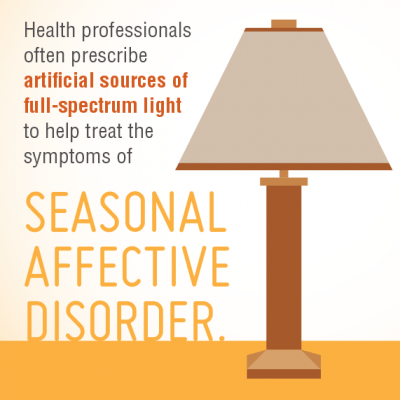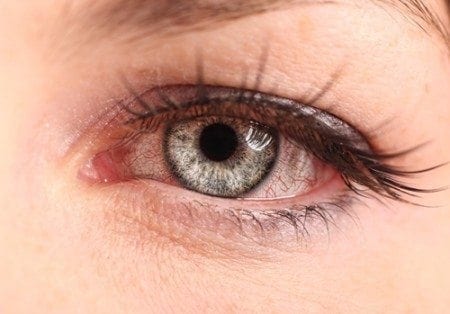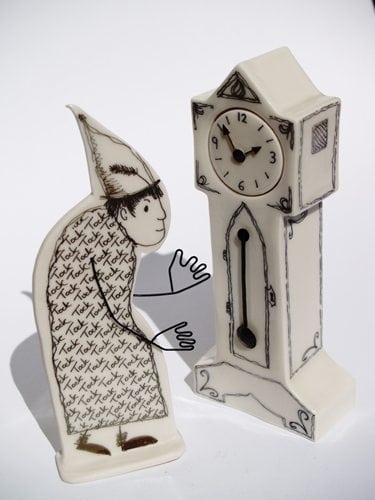Seasonal affective disorder is a mood disorder that you can treat in your own living room.
It occurs mostly in the fall and winter in response to more days of overcast weather. SAD is also common in geographic regions that do not get a lot of sunlight, such as Washington. Sometimes referred to as the “winter blues” by people who are feeling down in the winter, this disorder is noted by a depressive state that only sets in during a specific time of the year.
It is most often attributed to problems with secretion of hormones that occurs in response to exposure to full-spectrum light from the sun. Melatonin, a hormone that causes you to feel tired, is produced more regularly when you have less contact with sunlight. If you do not have enough exposure to the sun for prolonged periods of time, you may feel fatigued and lethargic.
Some researchers have even found that SAD may be correlated to low levels of Vitamin D. Without sunlight, your body produces this vitamin at a slower rate.
Where light comes in
Given that SAD is tied to a lack of exposure to sunlight, the obvious treatment would be to get under the sun and recharge. In fact, many medical and psychological professionals recommend that patients who are suffering from the effects of SAD simply take a half hour walk on a sunny day.
But what happens when a walk isn’t the best solution? During some winters, there sky is overcast for several days at a time, and it may be a while before you can see the sun for a extensive period of time. What if you could bring the sun into your home?
Alternative light therapy
Health professionals often prescribe artificial sources of full-spectrum light to help treat the symptoms of SAD. Such methods of administering light therapy entail positioning yourself in front of a light source that produces 10,000 lux for 30 minutes a day. In the past, many experts turned to light boxes to deliver light therapy, but many contemporary solutions offer treatment in the form of a bright table lamp.
Not just any lamp will do, however. The key is coming as close as possible to the full-spectrum light that comes from the sun.
What does full-spectrum mean?
Your eye cannot detect all the colors of the light spectrum. The part you can see is known as the visible spectrum, which encompasses several wavelengths, including red, green, yellow and blue. Full-spectrum lighting includes both the light you can detect and other wavelengths like infrared and ultraviolet light.
When lighting manufacturers offer a full-spectrum lamp, they are not actually referring to a light that has every wavelength. What they are actually offering is a lamp that provides light similar to the natural glow of the sun, without the harmful radioactive waves of course.
A special graph called a spectral power distribution curve can be used to determine whether a lamp used for SAD treatment actually offers full-spectrum light. These colorful graphs tell how much of each wavelength is emitted by a light source. When you see an SPD curve for natural light, there is a smooth line. Other light sources have spikes every so often along the curve.
Even though there are no lamps that offer light that actually covers the full spectrum, there are some products that come close, such as those offered by Microsun. Some psychiatrists, particularly in Syracuse and Providence, R.I., have even prescribed our lamps as a treatment for SAD. A few customers have reported an improvement in their well-being after using our lamps to bring a little bit of the sun into their homes.




